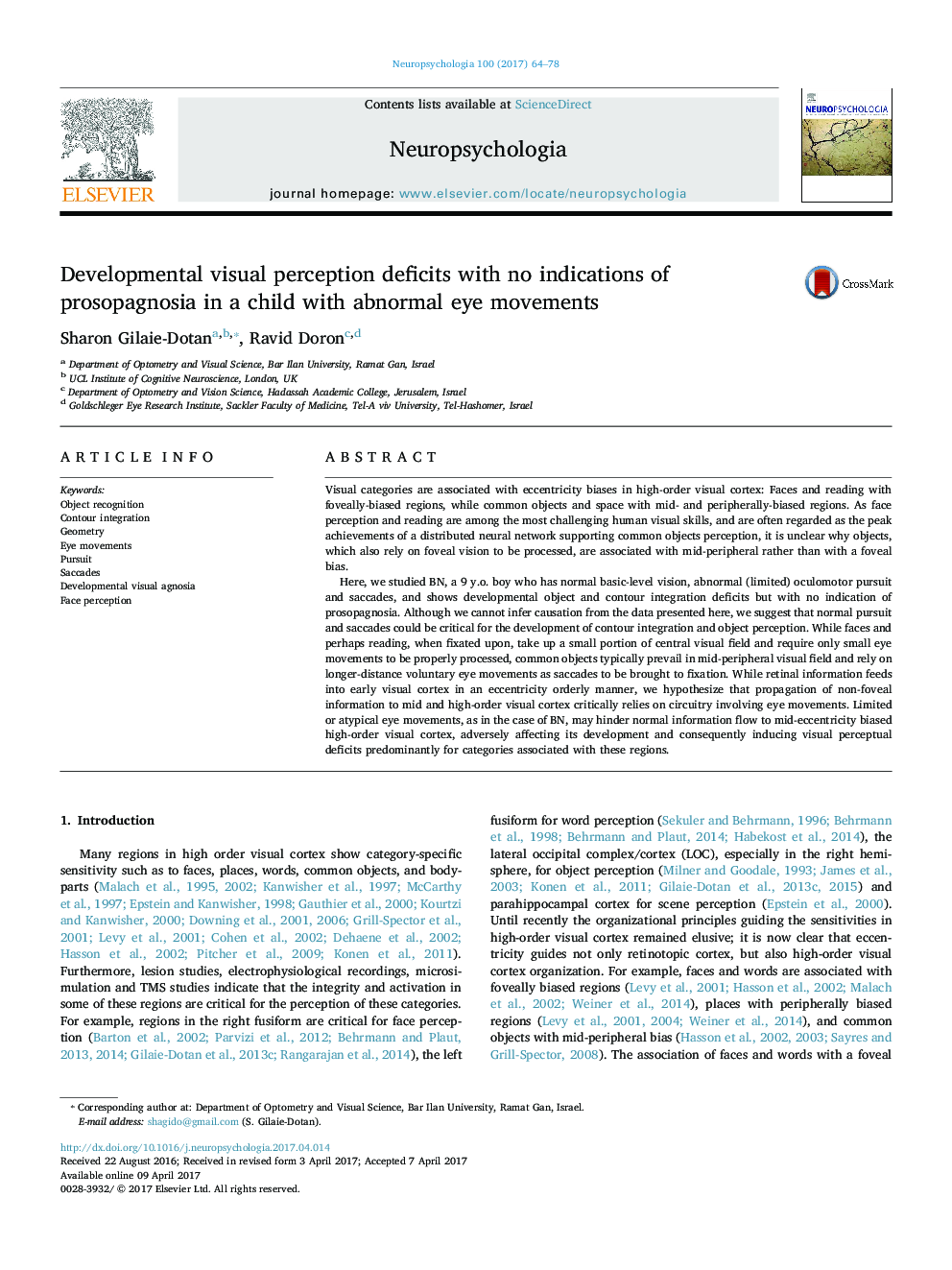| Article ID | Journal | Published Year | Pages | File Type |
|---|---|---|---|---|
| 5045069 | Neuropsychologia | 2017 | 15 Pages |
â¢A boy with object and contour perception deficits, difficulty in geometry is reported.â¢No indication of prosopagnosia.â¢Normal basic level vision but limited pursuit and imprecise saccades.â¢Proposal: normal pursuit and saccades could be critical for perceptual development.â¢Proposal: object-selective cortex's mid-peripheral bias linked to eye movements.
Visual categories are associated with eccentricity biases in high-order visual cortex: Faces and reading with foveally-biased regions, while common objects and space with mid- and peripherally-biased regions. As face perception and reading are among the most challenging human visual skills, and are often regarded as the peak achievements of a distributed neural network supporting common objects perception, it is unclear why objects, which also rely on foveal vision to be processed, are associated with mid-peripheral rather than with a foveal bias.Here, we studied BN, a 9 y.o. boy who has normal basic-level vision, abnormal (limited) oculomotor pursuit and saccades, and shows developmental object and contour integration deficits but with no indication of prosopagnosia. Although we cannot infer causation from the data presented here, we suggest that normal pursuit and saccades could be critical for the development of contour integration and object perception. While faces and perhaps reading, when fixated upon, take up a small portion of central visual field and require only small eye movements to be properly processed, common objects typically prevail in mid-peripheral visual field and rely on longer-distance voluntary eye movements as saccades to be brought to fixation. While retinal information feeds into early visual cortex in an eccentricity orderly manner, we hypothesize that propagation of non-foveal information to mid and high-order visual cortex critically relies on circuitry involving eye movements. Limited or atypical eye movements, as in the case of BN, may hinder normal information flow to mid-eccentricity biased high-order visual cortex, adversely affecting its development and consequently inducing visual perceptual deficits predominantly for categories associated with these regions.
